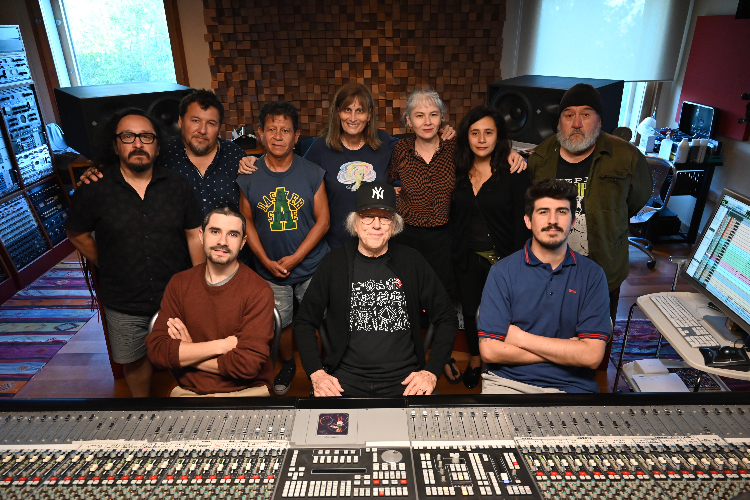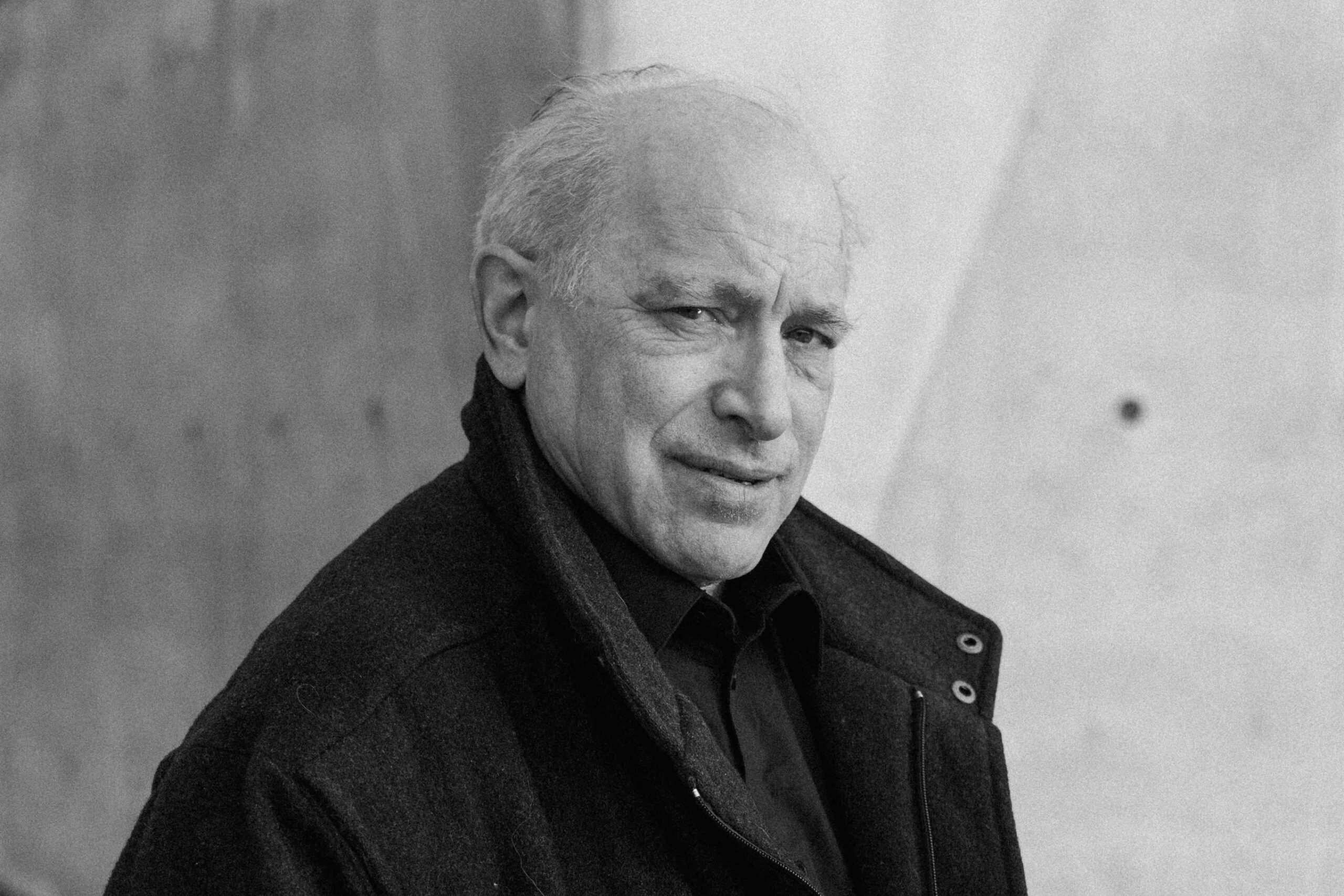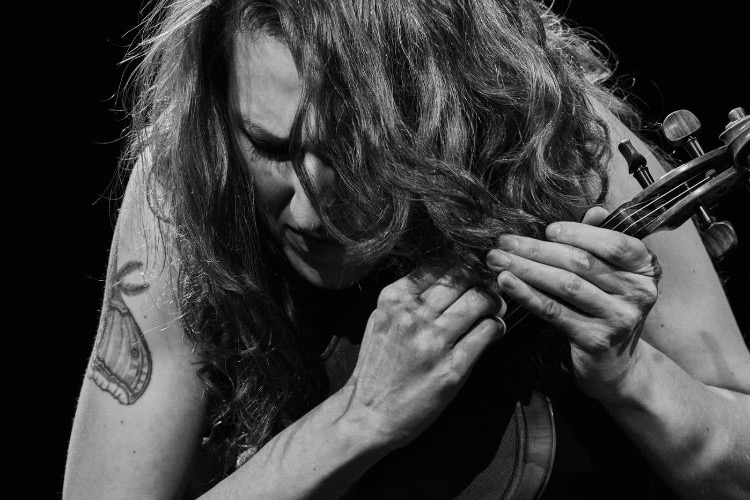Mourning and Hope: A Conversation with Susan Alcorn
|
Getting your Trinity Audio player ready...
|
For centuries, music has served as an empowering call for the oppressed and alienated. The origins of Blues, jazz, and rock all have their core in the subjugation of Black America. In Nazi Germany, youths would covertly undermine the Reich by playing verboten swing music in hidden corners of their community. Fela Kuti used Afrobeat as a weapon of self-defense against military rule. With Canto, Susan Alcorn explores this magic of music to provide power to the alienated.
Canto’s roots lie in nueva canción, a folk music that played a central role in the pro-democracy upheavals during the 1970s and 1980s in Spain, Portugal, and Latin America. Specifically, the Chilena version of such music. The leader’s Septeto del Sur finds the steel guitarist surrounded by artists from the “pais de los poetas” and records them in their native country. Some of the other artists grew up in an era in which brutal military dictator Augusto Pinochet’s Caravan of Death and torture centers were a fact of life. In addition to those who died, many more were exiled; forcibly removed from their homeland. The unavoidable mournfulness caused by such circumstances can be heard in the works of artists like Victor Jara and inexorably mirrored in the Septeto’s work on Canto. Across the album, minor-keyed themes reflect a lyrical sorrow that is raw and emotional.
But Alcorn’s latest work is not just an exploration of nueva canción Chilena. Instead, the album incorporates free improvisation and liberal use of microtonality and dissonance. In so doing, it explores concepts of alienation more generally, as in some musical circles, as such approaches remain disdained. While no one would claim that any woes of dealing with musical purists even begin to come close to those living in a dictatorship, some of the emotions invoked – a feeling of otherness and segregation from others – are nevertheless shared.
Canto is a beautiful recording that pushes towards a higher goal, one of widespread peace, love, and respect. The music is often sad but with glimmers of hope emerging throughout. And the closer, a rendition of Jara’s “El Derecho De Vivir En Paz” leaves the listener with an optimistic outlook as it reflects anticipation of a better world, perhaps not quite here yet but someday to come.
PostGenre: How did you first become interested in Chilean music and culture?
Susan Alcorn: Well, I guess I got my first view of Chile in 1973 when the coup led by Pinochet took place. I was a student activist back then and watched, in horror, at the coup on the TV.
PG: In terms of your getting deeper into Chilean music, were you familiar with nueva canción before you went to Chile?
SA: Yes. I was a big fan of Mercedes Sosa, though she was from Argentina. I also knew the music of Silvio Rodriguez from Cuba. I wasn’t too familiar with the Chilean version of nueva canción previously. I knew the music of Victor Jara and other giants from the 50s, 60s, and early 70s. But it was not until I visited Chile in 2003 that I started getting more in tune with Chilean nueva canción. And my connections continued to go deeper since.
PG: If your trip was in 2003, why did it take almost twenty years to record an album of Chilean-influenced music?
SA: Well, I have been playing Chilean-influenced music in performances over the last twnety years. Chilean music has always been in the back of my mind. And then, in 2019, I received a grant to make my album Pedernal (Relative Pitch, 2020). That album did better than we expected, and I was given another grant. I decided to use the grant to fly to Chile and record this music.
PG: Pedernal and Canto sound very different, but do you see a connection between the two albums? The album art for both is certainly similar.
SA: The same artist did both album covers. Musically, I guess both albums share my own personal aesthetic. Both use my harmonic language with a lot of microtonality and dissonance.
PG: Your use of microtonality and dissonance is not necessarily common to most steel guitar music. The instrument is often associated with folk music. Given that nueva canción is also a type of folk music, do you feel there is something specific about your instrument that made you feel a little more connected to Chilean nueva canción?
SA: I don’t know. I don’t think my interest in nueva canción has anything to do with the instrument. Throughout our lives, we are all exposed to many things. For musicians, some people know what they want to do right away. Maybe they go to a conservatory, or maybe they study Cecil Taylor. I started out playing trumpet and got kicked out of the school band when I was in the eighth grade. I started playing guitar because I was really into ’60s American folk music, with people like Joan Baez. I also got into country blues and musicians like Blind Willie McTell and Robert Johnson.
Then I got into rock music by people like Cream and Jimi Hendrix. Later, bluegrass. Then I started playing the pedal steel because what most people call classic country music connected with me. I found it direct and not harmonically complex, unlike so much of jazz or twentieth-century classical music. But there is a direct connection and certain lyricism.
PG: The music on Canto is lyrical but, other than “El Derecho de Vivir en Paz”, the songs are entirely instrumental. Was it difficult to compose in a way that brings that lyrical emphasis to the fore without a vocal part?
SA: In putting together the pieces, I first just play something on my steel guitar, whether a melody or some other idea. The three tunes I wrote specifically for this project begin and end with me just playing the melody on the pedal steel, accompanied by bass. So, I wrote the melody first and then crafted the bass part to go along with it.
PG: To point to one song, you previously recorded “Mercedes Sosa”, for your album Uma (Loveletter, 2000) as a solo piece. What was behind the idea of rearranging and re-contextualizing that piece?
SA: Well, I wrote the piece twenty-five to thirty years ago. Other people have recorded it and played it with me as well. There’s a certain rhythm to the piece; a certain feel. I thought it would sound nice on this album, played by this group of musicians.
PG: To ask about another song, at one point, “Presente: Sueño de Luna Azul” re-conceptualizes Olivier Messiaen’s “Et exspecto resurrectionem mortuorum.” What inspired you to include part of the Messiaen piece on this track?
SA: It just seemed cool to put it in there. There are a lot of things that go into your head when you create a composition. The section of that song right before the Messiaen part came from my having listened to some death metal and thought some ideas from there would sound cool on the piece. As far as “Et exspecto resurrectionem mortuorum” specifically, the piece was written about the French killed by the Nazis. Perhaps, subconsciously, I saw a connection there and with music in response to Pinochet.
PG: And, actually, the entirety of Canto was recorded in a small town in Chile, correct?
SA: It wasn’t even in a small town. It was basically out in the middle of nowhere. Someone built a big recording studio. It is one of the fanciest recording studios I’ve ever been in, not having been to Electric Ladyland or certain studios in Nashville.
PG: Do you feel the unique recording environment can be heard on Canto in some significant way?
SA: Possibly, but probably not. What I think comes out in the record is how those of us in this group spent so much time together when we recorded. We all lived together. I think that closeness can be heard in the recording. But basically, the music was composed and arranged before I went down there. Not all of the other musicians could read music – they relied on their ears- others could read but had never really improvised before, and some were great at both.
Those differences in experiences made the process of putting together the album a little more difficult, but we all had a deep rapport that overtook any problem. I’m hoping we can play together again soon. We have an invitation to play at a festival here, in the US, in 2025, but the logistics are pretty daunting because everybody needs to have work visas, which are very expensive, so we’ll see.
We had great camaraderie. I was a fifty-nine-year-old American woman coming down to Chile and wanting to record a nueva canción album and mix it with free improvisation. They easily could have been offended by the idea, but they were very enthusiastic about the project.
PG: It seems no one has combined free improvisation and nueva canción before.
SA: Yes, I suppose the closest would be Charlie Haden’s Liberation Music Orchestra. But that group made jazz records. While our record has free improvisation and dissonance, I don’t really consider ours a jazz album.
PG: The song “El Derecho de Vivir en Paz” seems to well reflect the close-knit nature of the group. How did that piece end up on the album? It sounds quite different from the other tracks.
SA: The one piece that has lyrics was a last-minute idea. We were originally going to record five songs when I was in Chile. We rehearsed for three days and then recorded for two days. During those days, we spent a lot of time together. When we were eating dinner one night, the flute player, Rodrigo Bobadilla, grabbed a guitar and started playing it. The drummer, [Claudio] “Pajaro” Araya, started playing spoons and singing some old romantic songs that probably everybody knew from the 50s or 60s.
I thought it would be perfect to add us singing a romantic song as a final tune on the album to try to end it on a lighter note. I asked the rest of the group to pick a song, and they chose the Victor Jara tune “El Derecho de Vivir en Paz.” They also decided that Amanda [Irarrazabal], the bass player, would sing the lyrics. We didn’t rehearse the song. There were two takes, and we used the second one. But the whole thing was on the fly and a late addition to the album.
PG: Of course, the title of the song – translated into “The Right to Live in Peace”- also reflects the suffering of those living under Pinochet’s oppressive dictatorship. Although it sounds very different, one cannot help but find a parallel between such music and that of Fela Kuti using music to fight a Nigerian military dictatorship. Or, to a certain extent, the Black American experience and how it manifested into the Blues, jazz, and other music. What do you think it is in the human spirit that makes such beautiful music out of horrible circumstances?
SA: Well, that’s a difficult question. I can only guess.
I think happy people write beautiful music too. I don’t think it’s a difference between happiness and unhappiness. But when you experience music by oppressed people, it’s a very emotional thing. How they feel comes out in music. So, as an example, the Blues can be very mournful but also show joyfulness. I think that’s the same way with Fela Kuti. It’s also the same thing behind American protest music as well. Most country songs are sad too, as are most traditional folk songs.
As far as why these forms of music were so popular through the ages, it may be an endorphin release. Or a need to feel very deeply. When I’m on the road, I often drive by myself, many hours of the day or night, while listening to music. I listen to some Bruce Springsteen or Leonard Cohen and sing along at the top of my lungs with tears in my eyes. Maybe it’s in our DNA to need to feel that deeply.
I also feel that, as musicians, we should not be on a pedestal somewhere making music in the abstract. We are members of that wide community of living things and I think musicians (and all artists) should take responsibility to address issues that we all face, many of them now existential. That is what I admire about people like Pete Seeger, the Clash, Pussy Riot, Sam Cooke, Rage Against the Machine, and Ilapu.
The nueva canción and trovador musicians walked the walk, and that has been a huge inspiration for this album. In Chile, the musicians were often exiled. Victor Jara and a few others were even murdered for their music. Some instruments – the charango and a flute called the quena- were outright banned in the country.
The Pinochet dictatorship changed everything, and I think the country is still emotionally bruised from it. People relate to these songs because some of the lyrics tear your heart up. They are so sad. But, like the Blues, there is also a joyousness to it, and maybe some kind of release.
Canto is now available on Relative Pitch Records. It can be purchased on Bandcamp. More information on Susan Alcorn can be found on her website.



